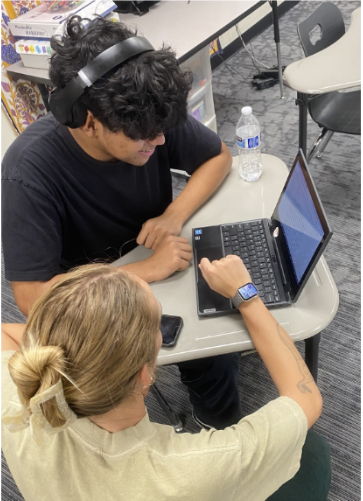
The clock has ticked down to the week every student dreads: Finals week. That time where we buckle down and look back on everything we’ve learned this past semester. Studying is, for the most part, crucial to obtaining good grades. But despite this, many students have trouble finding the “correct” ways to study. Hopefully, you’ll take these techniques past this stressful week and into the new semester.
Feynman technique:
Created by Nobel Prize winner Richard Feynman, the purpose of this study method is to understand heavy amounts of material in a comprehensible way.
According to a research preformed by the Computer Systems Institute, there are 4 steps to the process: Researching, teaching, simplifying, and referencing. When you learn the subject to teach it, rather than memorize it, it requires you utilize your knowledge by breaking the content down to simple explanations.
Once you have a deeper understanding of the material, you can explain to a friend, a pet, even an inanimate object. Whether you want them to have prior knowledge of the subject or not is your decision. Choosing a person with prior knowledge of what you wish to discuss can be especially helpful.
Blurting Method:
This concept is especially good for students who want to memorize information. While it shares a few aspects of the Feynman technique, this one focuses more on writing what you know rather than speaking. First, it’s time to put your notes to good use. Read over what you have, then cover it with a piece of paper. On a separate sheet, express as much as you can within a concept. When finished, refer back to your notes and compare.
Note anything you missed the first time around. Highlight, underline, whichever you need to do so you can remember what you missed. This strategy will help fill any gaps in your knowledge. By actively recalling the information you need to learn, you will zero in on topics that need more focus.
Spaced Repetition:
It’s easy to forget old material when we haven’t seen it in ages. Recounting past information is difficult without regularly studying it. And yet, most people tend to wait until the last minute before they study before an exam. Spaced Repetition is all about time, and it’s perfect for those who don’t have much of it.
This method focuses on how far apart your study sessions are. After studying for what you need to remember, you get to control how far apart your next session is. The time between intervals is all up to you. You can start with one hour, then four, six, etc. If you start early you can go up to a day, 2 days, etc. Each interval must increase after every session. Hourly schedules are good when you are closing in on a deadline. The content will stick because you are repeatedly covering what you know again and again. Spaced repetition will hopefully prevent you from forgetting certain concepts.
Priming:
Priming is better suited for information you have yet to touch in class, and it will be useful to practice as we move into the new year. In many classes, lectures are a driving force in how we learn new units. It can be overwhelming to take in all that new information for the duration of 1-2 hours. Priming is looking over the new material before you are taught it. When you recognize key concepts you have seen before, hour-long lectures will become less daunting.
The second semester can be hard at times. Hopefully, with these techniques in mind, you’ll achieve the grades you truly deserve.





